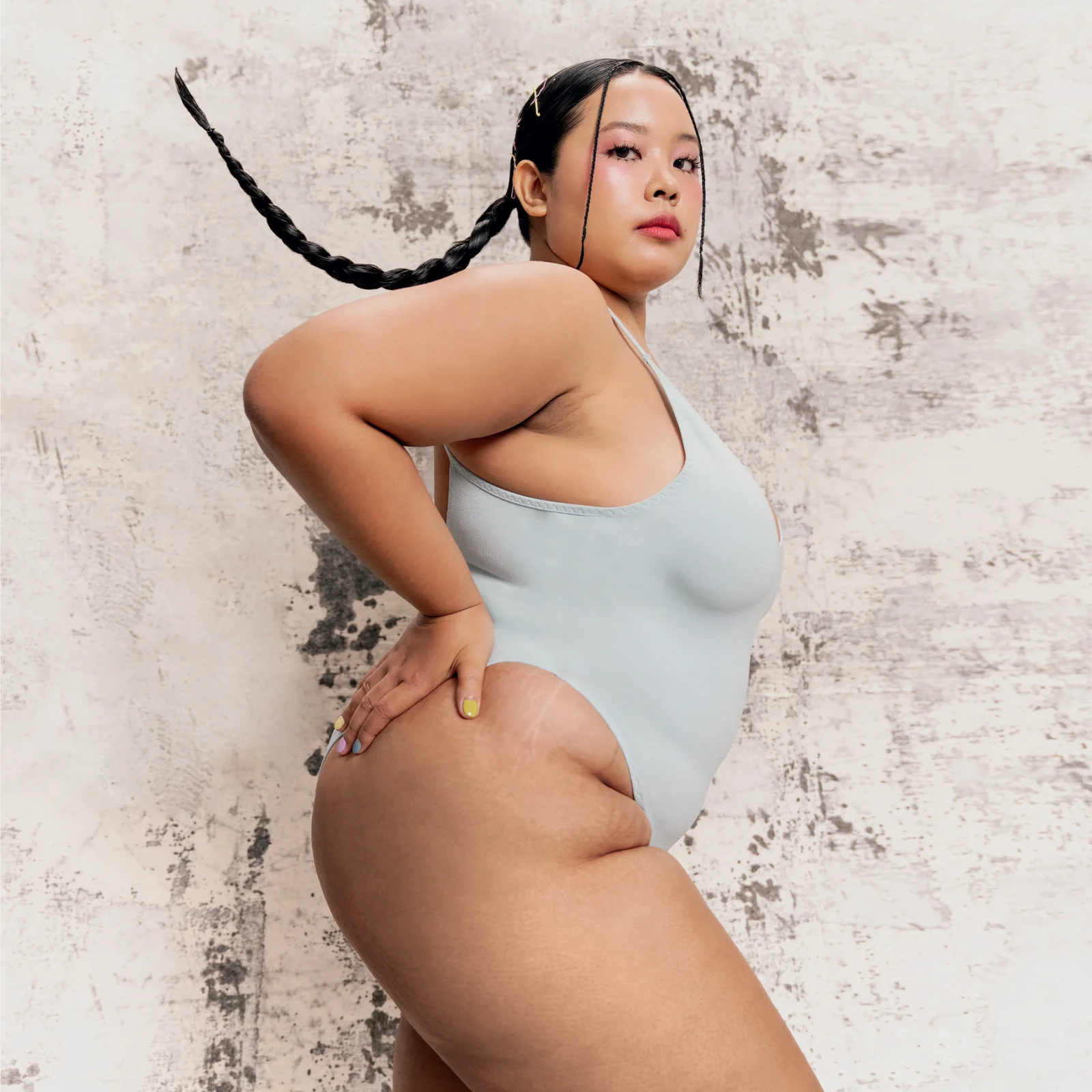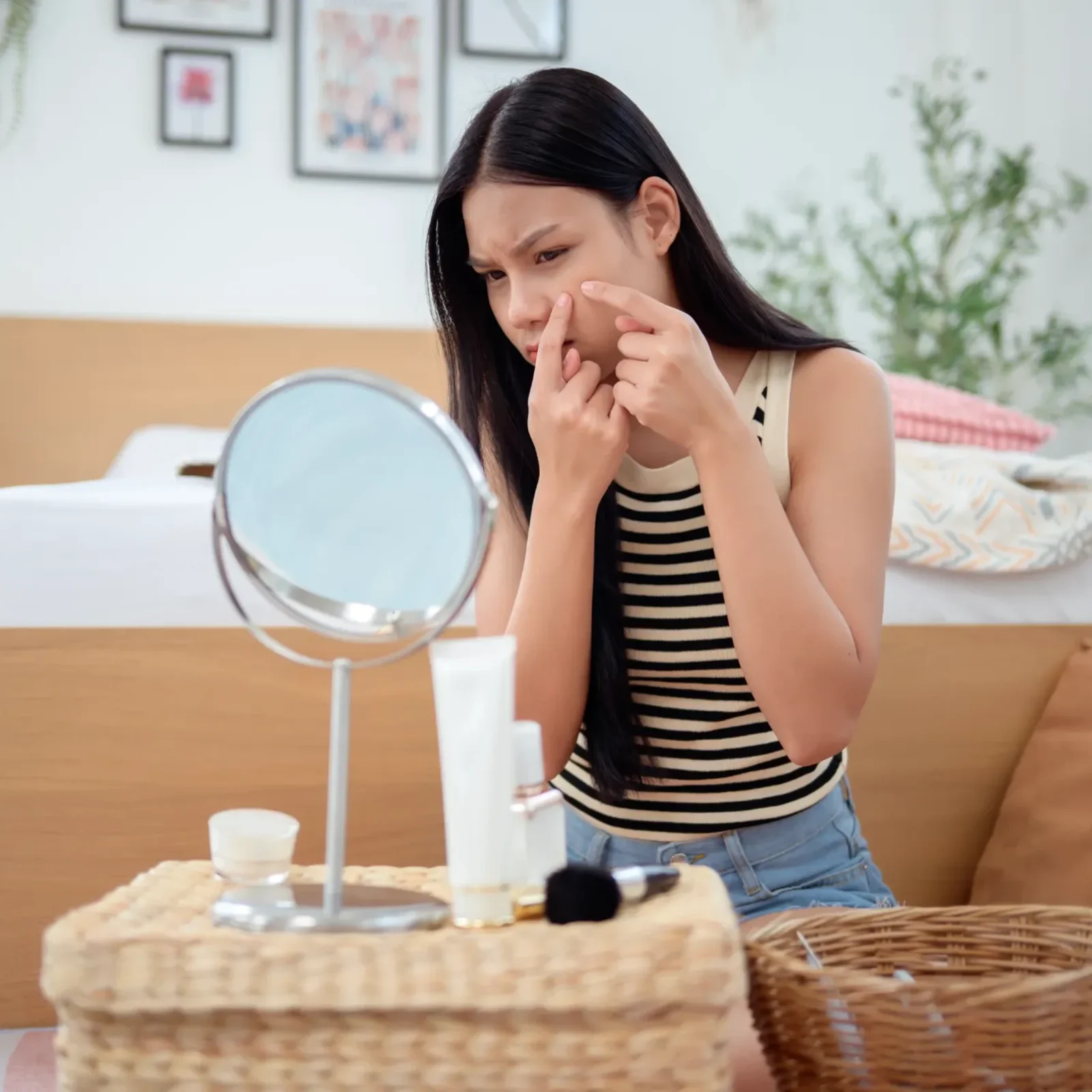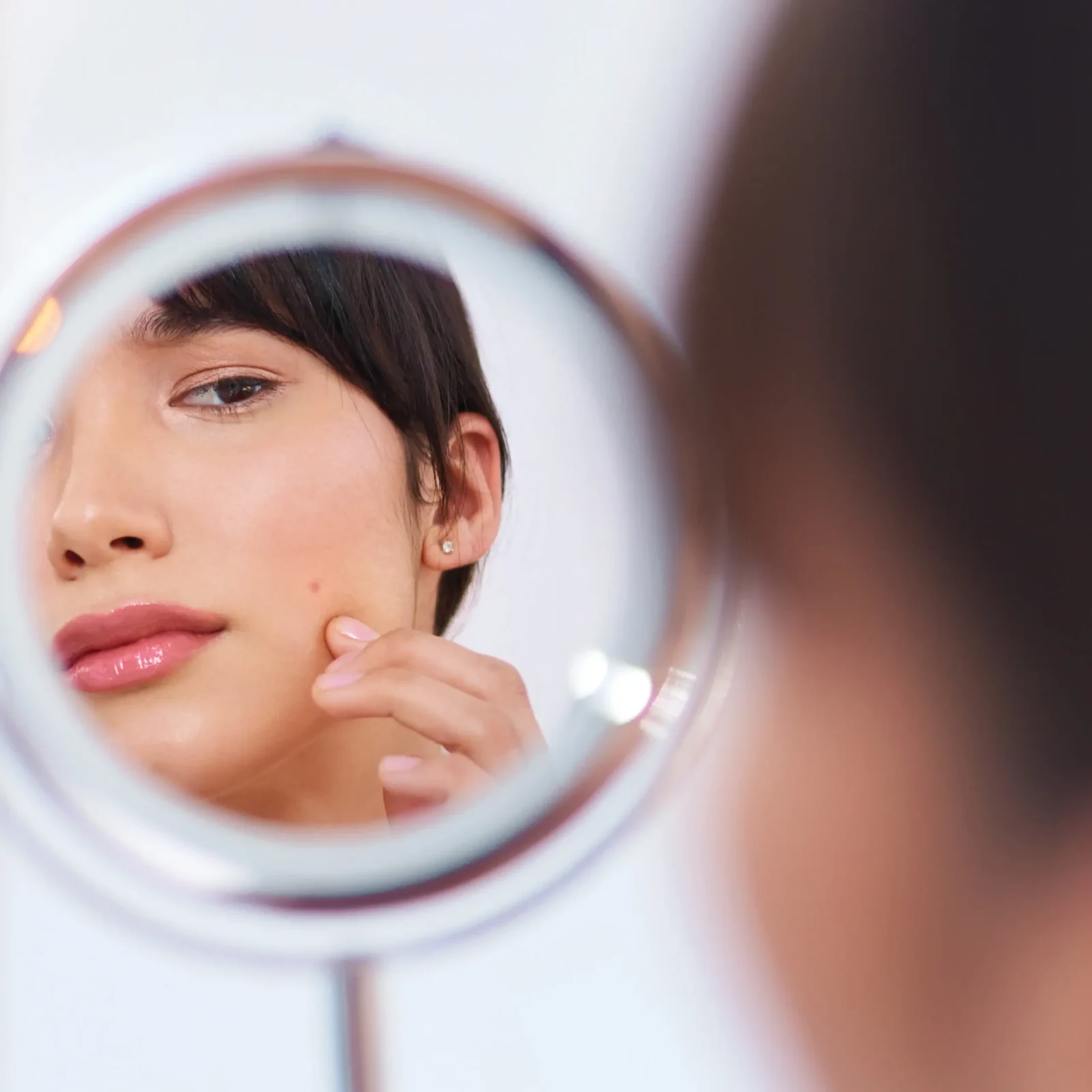How to Get Rid of Blackheads, According to Dermatologists
Derms share the best tips and product recs for this specific kind of acne.
By Marisa Petrarca and Lia Cruz
Additional reporting by Renee Jacques, Sarah Kinonen, and Rebecca Dancer.
Blackheads, much like cockroaches, are the worst for this very reason: Every time you squeeze one of them away, it seems you find dozens more to tackle. (How’s that for a fun visual?) As satisfying as that squeeze may be in the moment, the peskiness of blackheads can wear on anyone. They just keep. Coming. Back.
If it’s any consolation, you’re anything but alone when dealing with blackheads. They’re a type of acne that affects at least 17 million Filipinos, according to Rizal-based dermatologist Jella Mercado-Garcia, MD. In search of answers, we turned to top dermatologists to find out how to get rid of blackheads safely and efficiently, with options ranging from over-the-counter products and prescription medication to in-office intervention.
Meet the experts:
Jella S. Mercado-Garcia, MD, FPDS, MHA is the chairperson of Fatima University Medical Center Antipolo’s department of dermatology in Rizal.
Jessie Cheung, MD, is a board-certified dermatologist and founder of Cheung Aesthetics & Wellness in Chicago.
Rachel Nazarian, MD, is a board-certified dermatologist with Schweiger Dermatology Group in New York City.
Carmen Castilla, MD, is a board-certified dermatologist and a clinical instructor at Mount Sinai in New York City.
Shari Marchbein, MD, is a board-certified dermatologist and clinical assistant professor of dermatology at New York University.
Joshua Zeichner, MD, is a board-certified dermatologist and director of cosmetic and clinical research at Mount Sinai Hospital in New York City.
Sejal Shah, MD, is a board-certified dermatologist with SmarterSkin Dermatology in New York City.
Jeremy S. Fenton, MD, is a board-certified dermatologist in Long Beach, New York.
In this story:
Is it OK to squeeze blackheads?
Will blackheads go away on their own?
What softens blackheads for removal?
What exactly are blackheads?
Before you try to get rid of blackheads, it’s important you understand what they are, starting with their technical name, the “open comedone.” (There are two types of comedones: open and closed, the latter of which you likely refer to a whitehead). Blackheads look like itty-bitty dark bumps on the surface of the skin. “They appear when sebum gets trapped with dead skin at the surface of your pores,” says Jessie Cheung, MD, a Chicago-based board-certified dermatologist and founder of Cheung Aesthetics & Wellness. It’s the oil’s exposure to air that causes them to oxidize and turn black, she adds.
Some people wrongfully assume that black speck is dirt, but as evidenced above, that’s not the case. “Having [blackheads] isn’t a sign that you’re dirty,” says Rachel Nazarian, MD, a board-certified dermatologist in New York City. But if you frequently get them, it’s worth trying to pinpoint why.
Why do you get so many blackheads?
Carmen Castilla, MD, a New York City-based, board-certified dermatologist, warns there are several reasons you can’t escape blackheads. Where it gets complicated, per the pro, is that it’s “all the same pathogenesis.” In simpler terms, the triggers leading to blackhead formation in one person may also be responsible for acne vulgaris and whiteheads in another.
That being said, one of the primary culprits for blackheads is excessive oil production, which can be influenced by genetic and hormonal factors. Dr. Cheung further clarifies that individuals with naturally oily skin are more prone to visible blackheads due to their skin type and larger pores.
Other causes that might surprise you? Using occlusive skin-care products, Dr. Castilla continues. Occlusive products create an airtight protective barrier on the skin to keep in moisture but can cause clogged pores on oily skin types.
Is it OK to squeeze blackheads?
If you take away anything from this article, please let it be that you shouldn’t—under any circumstances—squeeze your blackheads. Dr. Cheung warns that doing so may “push the blackhead deeper or even cause scarring that can lead to larger pores.” Even worse is the possibility of infection, because you’d potentially add bacteria into the area with your hands, warns Dr. Castilla.
Will blackheads go away on their own?
Yes and no. “If the blackhead is small and near the surface of the skin, it can potentially resolve on its own,” says Dr. Castilla. On the other hand, deep blackheads don’t and often require professional extraction, she says. While she admits that it can be difficult to tell how deep a blackhead is, she explains that, “typically, the larger the black dot is on the surface, the deeper the blackhead is.”
What softens blackheads for removal?
If you’re a dedicated fan of professional facials, you might think the only way to banish pesky blackheads is through manual extraction. However, Dr. Cheung dispels this common misconception and presents a compelling alternative: chemical keratolytics. Among them are salicylic acid, retinol, glycolic acid, and more. The pro deems these exfoliating substances the preferred methods to tackle blackheads at home because they target and break down clusters of skin cells responsible for blackheads sans tweezers or invasive tools.
How do you treat blackheads?
When it comes to getting rid of blackheads or any acne for that matter, there are two things you can do: You can use expert-recommended skin-care products at home and see if they help, but visiting a dermatologist may be the most helpful for a personalized course of action based.
The best blackhead treatments for you will ultimately depend on your unique skin type, but if you’re looking for an overarching guide, here are some of the best over-the-counter and prescription treatments to look out for, per top dermatologists.
1. For mild blackheads, use salicylic acid
“If you have blackheads, your go-to ingredient should be salicylic acid,” a type of beta-hydroxy acid (BHA), says Joshua Zeichner, MD, a board-certified dermatologist and director of cosmetic and clinical research at Mount Sinai Hospital in New York City. “This beta hydroxy acid helps remove excess oil and exfoliate the cells from the surface of the skin.”
The best way to utilize salicylic acid is to try a gentle face scrub, which acts as a one-two punch for combatting blackheads, providing double the exfoliation powers. “The combination of physical exfoliation from the scrub and chemical exfoliation from the salicylic acid can help keep the pores clear,” Dr. Zeichner says.
A favorite salicylic acid scrub is Paula’s Choice 2% BHA Liquid Exfoliant.
However, you shouldn’t exfoliate with a scrub every day. The general rule of thumb is three times per week for oily or combination skin and just once weekly for sensitive skin, says Shari Marchbein, MD, a board-certified dermatologist and clinical assistant professor of dermatology at New York University. On the days you don’t use a scrub, swap in a gentle salicylic-acid cleanser, like Cerave Renewing SA Cleanser, containing salicylic acid and ceramides.

Dr. Castilla advocates against placing all trust in spot treatments when dealing with blackheads. She emphasizes consistent preventive treatments to ward off their formation from the start. This is important because even though blackheads don’t look inflamed on the skin’s surface, they cause inflammation beneath the skin, explains Dr. Castilla. And “just like inflammatory pimples, blackheads can also lead to scarring,” which is why prevention is of the utmost importance.
However, if, despite your best preventative efforts, these stubborn blemishes manage to make an appearance, Dr. Castilla and Dr. Cheung concur that salicylic acid is the game-changing ingredient we need. According to Dr. Cheung, salicylic acid has the ability to “break up the clump of skin cells” and possesses a lipophilic nature, which enables it to target the oil within sebum specifically. This dual action makes salicylic acid great for treating existing blackheads and preventing future buildup.
For spot treatments, try Benzac Spot Treatment Gel with 5 percent salicylic acid.

And when it comes to nose strips, which are easily accessible in drugstores and often marketed as a solution to blackheads, Dr. Garcia shares that while the strips “physically remove the blackheads from the pores, the pores will still eventually get filled up again—without addressing the main problem of sebum production or inflammation.”
2. For more stubborn blackheads, try retinol
“Retinoids can help treat blackheads and clogged pores by reducing the stickiness of the cells that clog pores, as well as speeding up the rate at which the skin turns over and regenerates,” Dr. Marchbein says. While there are many retinol myths, the underlying truth about the ingredient is that the right percentage and regimen can transform your skin—including helping to keep blackheads at bay.
If you have sensitive skin, consider an over-the-counter retinoid cream, such as Cerave Resurfacing Retinol Serum or Avene Retrinal 0.1 Intensive Cream.

For peskier cases of blackheads, prescription retinoid creams such as “tretinoin or adapalene can be effective,” says Dr. Garcia. But she advises caution when using these for the first time: “Pea-sized amounts at night should be enough for the whole face,” she says. “Beginners should space out the usage to twice or thrice a week, and moisturizer can be applied before or after retinoid application to minimize side effects.” Before integrating prescription products into your routine, talk to your derm first.
3. Oral medications may be warranted, but only for special cases.
Dr. Garcia explains that for blackheads, oral medications are not usually recommended, with treatment usually going the way of topical retinoids or benzoyl peroxide. “However, if the patient is also experiencing moderate to severe acne together with the blackheads, then oral medications could be warranted,” she says.
4. Lastly, don’t forget to moisturize
We’ve said it before and will gladly repeat it: Moisturizing is a crucial step in any skin-care routine—even if you’ve got acne-prone skin. That’s because “all of these methods may strip oils from the skin and be drying,” says Jeremy S. Fenton, MD, a board-certified dermatologist in Long Beach, New York. “It’s important to maintain the right balance in the skin, and moisturizing will allow you to continue using exfoliating products without any issues.”
A pro tip that’s especially helpful for sensitive skin: If a retinoid cream is too drying, try applying it over moisturizer (or even between layers of moisturizer). We love Neutrogena Hydro Boost Nourishing Cream with Hyaluronic Acid.

Latest Stories
You might also like
To provide a customized ad experience, we need to know if you are of legal age in your region.
By making a selection, you agree to our Terms & Conditions.







